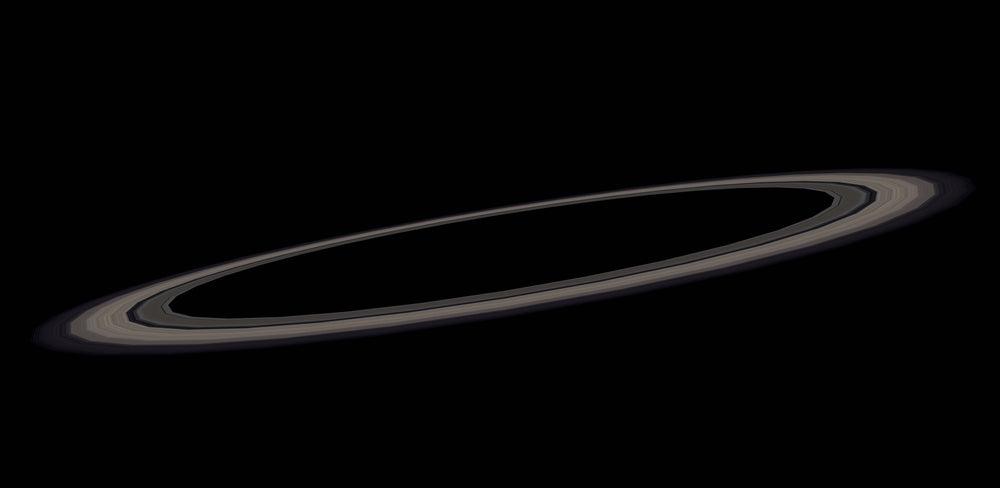
What's In The Guts Of A Fluffy Gas Giant? This Bumpy Ring Might Whisper The Secret...
Share
What's in the guts of a fluffy gas giant?
Well, we wish we knew…
But the insides of these big fart havens remain a mystery as they’re notoriously difficult to probe.
However, Saturn's gorgeous ring system is providing a way to determine the density of material beneath its thick cloud layers, right down to its core.
In a new analysis of Saturn's innermost main ring, researchers found it's a "fuzzy" region of mostly hydrogen and helium, which extends to 60 percent of the planet's radius and contains about 17 Earth masses of ice and rock.
Saturn's early structure and formation history could be radically changed by this finding, which was recently published on the preprint server arXiv and awaits peer review. This finding is similar to recent results showing the interior of Jupiter based on Juno data.
The rings of Saturn can be used as evidence for that, but how? Saturn's external gravitational field is affected by rumblings in its belly.
Cosmological bodies can be probed using acoustic waves and oscillations inside them. We can do it here on Earth, where earthquakes send waves rippling through the planet; the way in which these waves bounce around can reveal different densities, allowing us to identify structures we couldn't even hope to see. The Sun, as well as other stars, display fluctuations in brightness caused by interior acoustic waves.
The innermost ring of Saturn, Saturn's C ring, doesn't have a seismometer, and its brightness doesn't fluctuate. But a few years ago, scientists noticed patterns in its C ring.
According to their findings, the patterns could not have arisen from Saturn's moons, as such patterns are in the outer rings; instead, they may have been generated by oscillations deep within the planet's interior, which influence its gravitational field.

Gnarly look at some spacey planetness...
As a result, the field of kronoseismology came into existence: analysing the C ring waves to understand Saturn's interior.
Astrophysicists Christopher Mankovich and Jim Fuller of Caltech have studied a previously characterized inner C ring wave, whose frequency was much lower than that previously reported expected of the established Saturn interior model. Saturn's interior composition is now subjected to a new constraint due to the frequency pattern found in its interior.
"Our models place tight constraints on the mass and size of the heavy element core of Saturn, even as the dilute nature of this core requires a more nuanced description than in traditional layered models," they wrote in their paper.
These constraints led to the conclusion that the core has a mass of 55 times that of Earth, containing 17 Earth masses of rock and ice. Hydrogen and helium make up the rest; the mixture is diffuse rather than stratified, with heavier elements concentrated closest to the center.
Modelling the formation of planets is somewhat challenging in light of this fact. Observations indicate that planets are formed by the process of accreting pebbles, whereby small rock fragments merge with each other until the planet's seed becomes large enough to gravitationally attract more material, which eventually forms a planet.
For gas giants such as Jupiter and Saturn, heavier material was thought to sink towards the center, forming a solid core, while lower-density gas rose to the outer regions.
Alternatively, convective mixing may result in gradual distribution of material, which is supported by recent models.
It has turned out to be difficult to model formation pathways for fuzzy cores, and there will likely need to be more complex science experiments in order to fully understand the process.
However, it is still very early to say. The new study is based on one C ring wave. A little more kronoseismology would help validate the interpretation of a fuzzy Saturn core.
Thanks for reading!
Please share with an astro friend to spread ARSE and thrust Australia into the deep unknown…
#Space_Aus




